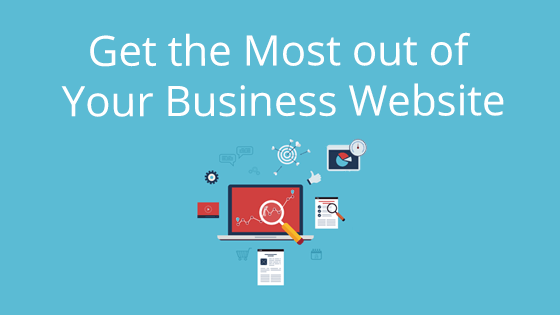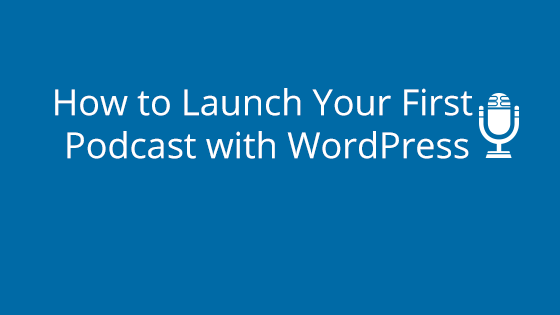After you’ve selected and registered your domain name, the real work begins for your new business website. There are several components to a good website including design, web copy, images, and more. Here’s a quick, six-step guide to help you get the most out of your site:
Step 1: Define your website goals
Why are you creating a website for your business? To increase online sales? Improve your reach and influence? Get more email subscribers? Whatever your goals, make sure you keep them in mind as you go. Use your goals to shape the content and design of your site. For example, if you want to increase newsletter subscribers, make your email signup form easily accessible on your site. Here are some examples of effective signup forms.
After you launch your site, you can use your goals to measure your success and make adjustments. Use your original goals to refocus on your priorities and test different elements of your site. Maybe you increased website traffic significantly over the first few months of your website being live, but didn’t see a high conversion rate for your newsletter signup form. Keeping your original goals in mind will help you determine your next move as you work to improve your conversion rate.
Step 2: Design your site with the user in mind
You’ve probably come across a few websites you found difficult to navigate, unclear about what they’re selling, or simply unattractive and uninviting. Even if you’re a beginner at web design, you can avoid making the same mistakes by keeping your end user in mind. Define your target audience and give them what they want: An easy-to-use and highly accessible website that clearly states who you are and what you can do for them. As you design your site, use this checklist:
- Readability – Choose your font and font size wisely. Some fonts are easier to read in print than they are on a screen. And while 12 point font makes sense for your print materials, many sites use size 14 or larger for their online copy. You should also make sure your font color doesn’t inhibit readability or that images aren’t blocking important text.
- Navigation – Consistency and simplicity are key when it comes to navigation. Keep your navigation consistent across all pages of your site because not everyone will enter your site the same way.
- Web Copy – Your end users will read less than 25% of the written content on your website. So you have to grab their attention and get your point across quickly. You don’t have time to nurture your visitors with endless paragraphs of text. Keep it short, compelling, and prominent.
- Accessibility – Don’t overwhelm your users with cool widgets and animations. Make your site accessible by understanding what your audience wants. Design your site with your audience’s goals in mind as well as your own.
Step 3: Write Compelling Copy
Web copy can make all the difference when it comes to the success of your site. As with your web design, keep your audience in mind as you write. You want to attract and keep their attention with compelling copy and then encourage them to return for up-to-date information. Update your website regularly with blogs or news articles that will interest your audience.
As you write content for your website, you should optimize it to attract organic traffic. Study up on search engine optimization (SEO) and increase your organic traffic by adding meta tags, headers, and keywords to your copy.
Step 4: Add Quality Images
Visuals are extremely important in an online environment where only 25% of your text will be read. Use high quality graphics and photographs optimized for the web. People are more likely to engage with beautiful photos than they are with grainy or blurry images. Also, many online shoppers search for items using image search engines. Add alt text and other SEO elements to your images so they’re easy to find.
Step 5: Make Your Site Mobile-Friendly
Mobile use has been on the rise for years. Don’t eliminate half of your audience before you even launch your site. Make sure your website is mobile-friendly! Use a consistent template or theme that will work for all mobile devices and desktop. You can also create less work for yourself with responsive web design (RWD) so you don’t need to create an entirely new subdomain just for mobile. Some website builders makes it simple – all of Weebly’s themes and templates have RWD.
Here are some more tips to help you get started with your mobile-friendly site.
Step 6: Use Google Analytics
As we discussed earlier, establishing goals will help you measure the success of your business website once it’s launched. Google Analytics is an effective and free measurement tool that will analyze your progress for you. If you’re nervous about implementing and using Google Analytics, Google Analytics Academy is full of resources to help you master their analytics tool.
After you’ve completed these six steps, you should be ready to publish your site! Once you’ve launched your business website, make sure you maintain it with regular software updates, relevant copy, and competitive keywords. Check the status of your site on Google Analytics to continue improving organic traffic and conversions. Creating a website is a ton of work, but the rewards for a great website are worth it. You’ll see more traffic, more leads, and more conversions if you do it well. Good luck!





